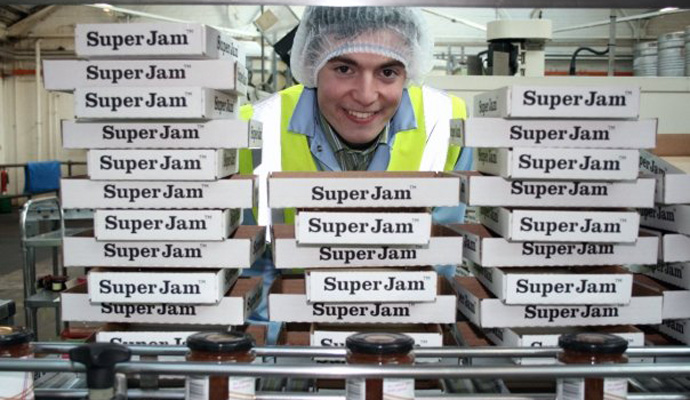From Subway to SuperJam: 5 successful companies started by kids
Some entrepreneurs were troublemakers when they were kids. Others were entrepreneurs.

Today's adolescent troublemakers are tomorrow's entrepreneurs, said a paper published in the Journal Of Vocational Behavior earlier this year.
That may be true, but some kids skip the throwing-fire-crackers-at-cats phase and launch successful businesses while they're still in their tweens. Here, five companies started by kids that are still going strong today.
Leanna's Hair
The Week
Escape your echo chamber. Get the facts behind the news, plus analysis from multiple perspectives.

Sign up for The Week's Free Newsletters
From our morning news briefing to a weekly Good News Newsletter, get the best of The Week delivered directly to your inbox.
From our morning news briefing to a weekly Good News Newsletter, get the best of The Week delivered directly to your inbox.

Leanna Archer has the kind of hair that makes friends and neighbors stop and ask, "What product are you using?" For Archer, the answer was a natural pomade her grandmother cooked up and sent her from Haiti. At age nine, she started divvying the stuff up in Gerber jars and giving samples to her admirers. "I had no intention of really selling it," she told NPR earlier this year. "I just knew that they wanted it and I made it available for them, and next thing you know they're showing up on my doorstep, you know, throwing checks at me and asking me how much of it will it get them."
Soon, Archer had launched her own all-natural hair care line of oils, dressings, and conditioners called Leanna's Hair. Now the wise old 17-year-old sells her product in 80 countries, and generates more than $100,000 in revenue each year.
SuperJam

Today, kids learn computer programming in school and start their own websites, hoping to become pint-size digital entrepreneurs. Fraser Doherty, a Scottish kid with a passion for jam, has simpler tastes. At age 14, Doherty started making jams based on his Gran's secret recipe, and selling them around his neighborhood. After fiddling with the recipe to cut back on sugar, at 16, he decided to commercialize. His first big break came from Waitross, a U.K. grocery chain, that liked his idea, but didn't love his goofy branding. Doherty quickly changed to a more natural look, and now sells more than 500,000 jars of SuperJam a year, making up about 10 percent of the U.K.'s jam market.
A free daily email with the biggest news stories of the day – and the best features from TheWeek.com
ModCloth

In 2002, 17 year-old Susan Gregg Koger launched the first website for ModCloth, a vintage retailer that specializes in whimsical, Zoe Deschanel-style clothing. Gregg-Koger, along with her then-boyfriend-now-husband, sold their vintage finds online throughout their college years at Carnegie Mellon. In 2006, they went full time, and soon grew to include vintage-inspired original designs, accessories, and decor. They relocated to San Francisco in 2010. They now have over 200 employees and make over $100 million a year in revenue.
What sets ModCloth apart from other vintage retailers? The way it blends vintage brands with new technology. This year, Fast Company named it one of the most innovative companies of 2013 for its "be the buyer" program, which lets its "millions-strong community pick from trade-show samples to decide what it should produce."
Subway

Fred DeLuca, the co-founder of Subway, opened his first shop in 1965 at age 17 to raise money for college. DeLuca borrowed $1,000 from his friend Peter Buck, and opened a shop called Pete's Submarines in Bridgeport, Connecticut. Within a year, he'd raised enough to open a second shop, then a third, and so-on. As of this summer, Subway had over 39,500 locations and made $9.05 billion in sales.
Makin' Bacon

Abbey Fleck was eight years old when she invented a new way to microwave bacon. In 1993, Fleck and her dad ran out of paper towels while making bacon, and instead blotted the mean with the newspaper's classified section. Disgusting, right? To ensure that would never happen again, Fleck invented microwave-safe plastic tray with a protruding T in the center. The design allowed the bacon cook to drape the meat over the T, so it dripped while cooking.
The product was a hit, and Abbey soon scored interviews with Oprah and David Letterman, and two features on Dateline NBC. You can still buy a Makin' Bacon on Amazon.
Carmel Lobello is the business editor at TheWeek.com. Previously, she was an editor at DeathandTaxesMag.com.
-
 How to financially prepare for divorce
How to financially prepare for divorceThe Explainer Facing ‘irreconcilable differences’ does not have to be financially devastating
-
 Why it’s important to shop around for a mortgage and what to look for
Why it’s important to shop around for a mortgage and what to look forThe Explainer You can save big by comparing different mortgage offers
-
 4 ways to save on rising health care costs
4 ways to save on rising health care costsThe Explainer Health care expenses are part of an overall increase in the cost of living for Americans